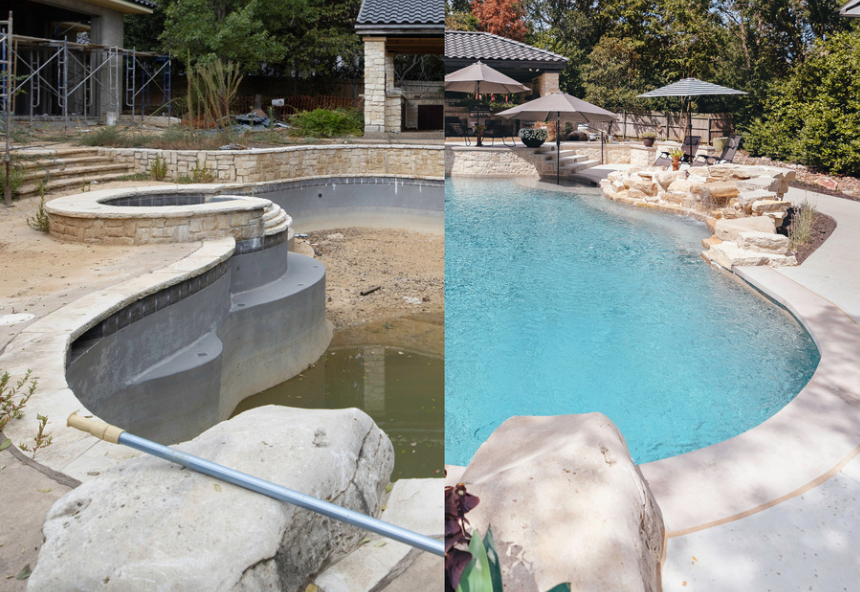Pool renovations refer to renovating, repairing, or entirely remaking an existing pool. Even with careful construction, pools get worn out over time — cracked tiles, discolored linings, or dated fixtures are the norm. Be it repair of damage, updating design, or enhancing safety, pool renovations can increase the life of your pool and enhance its functionality and looks.
Some of the renovations are strictly cosmetic, involving new tiles, coping stones, or lighting. Others are more fundamental, like repairs to leaks, resurfacing, or bringing plumbing and filtration systems up to date. It’s also frequently the case that homeowners will retrofit older pools as more energy-efficient or lower-maintenance models with the help of modern materials and technology.
Common Pool Renovation Services
The most common upgrade is resurfacing. Concrete and plaster finishes over time can become stained, rough, or begin to crack. Resurfacing smooths out the surface and returns the appearance of the pool using longer-lasting materials such as quartz or fibreglass.
Replacing tiles in the pool is a very common job. Worn, cracked, or missing tiles do not just appear old but are also sharp and unsafe. Fresh tiling can also make the entire atmosphere of the room new again, particularly when combined with updated colour schemes and LED lighting.
Old pipes, filtration systems, and pumps might also require replacement. Leaks, clogged pipes, or grinding motors are indications that something’s not performing as it should. Newer systems are less noisy, more efficient, and simpler to work on. Some pools are also equipped with saltwater systems, which are regarded as easier on skin and simpler to work with than old chlorine systems.
Safety upgrades are another priority area — installing non-slip surfaces, improving fencing, or installing pool covers can be a major improvement, especially for households with toddlers.
Signs a Pool Needs Renovating
There are several obvious indications that a pool would require maintenance. Cloudy or discoloured water, algae growth, or trouble maintaining the pool’s cleanliness usually indicate issues with filtration or water balance. Leaks, loose tiles, or uneven surfaces can signal structural problems. Even when the pool is in good working condition, an outdated design or worn finishes can devalue the property or make the area look neglected.
Energy bills are also a giveaway. Old heaters and pumps are costly to operate. Upgrading to energy-efficient models or fitting solar heating panels might save money and cut down on the carbon footprint.
If the pool hasn’t been used in years, or was included in property that’s recently sold, it’s worth having it inspected prior to reopening. This can reveal underlying issues before they cost more money to repair.
Planning a Pool Renovation
The scope of the remodeling varies based on the pool’s condition and budget. Some things, such as new lighting or simple tiling, can be accomplished in a matter of days. More complex remodels — such as structural repairs or reconfiguring the layout — can take weeks and usually need to be permitted or inspected.
Working with experienced pool contractors is essential. Look for companies with strong reviews and clear examples of past projects. Reputable firms will inspect the site, discuss your goals, and provide a clear written quote. They should also be able to explain any risks or limitations upfront.
Renovations may be scheduled so that you can capitalize on off-season rates — winter and early spring are great choices if you desire the pool available for summer without having to wait extended periods of time. Contact us to have your pool renovated.

